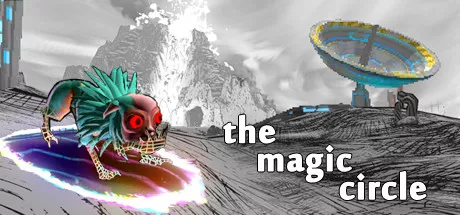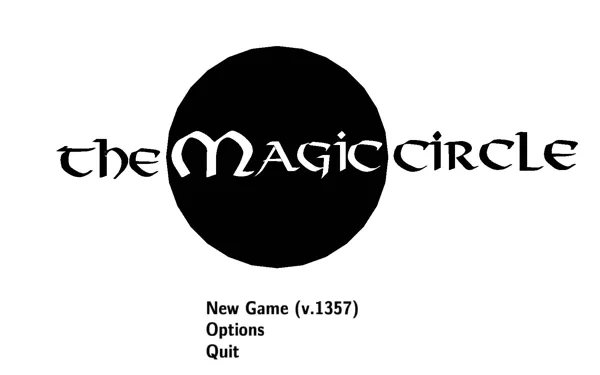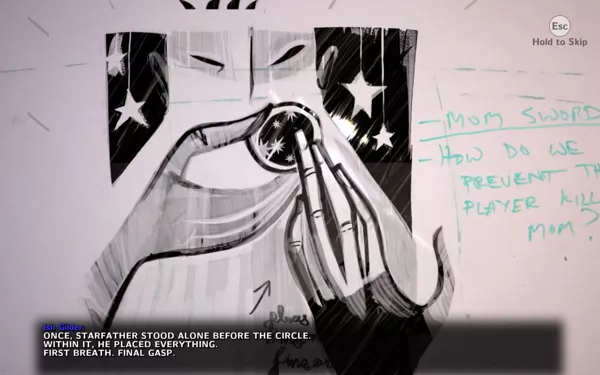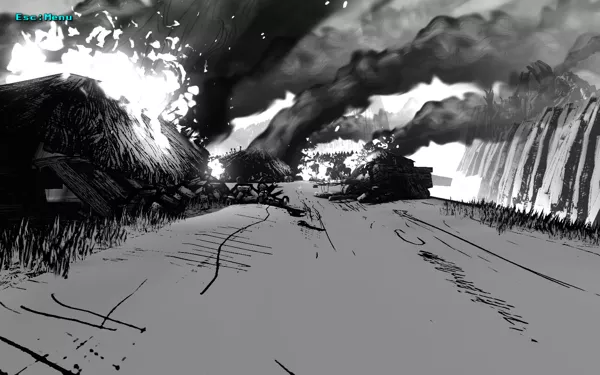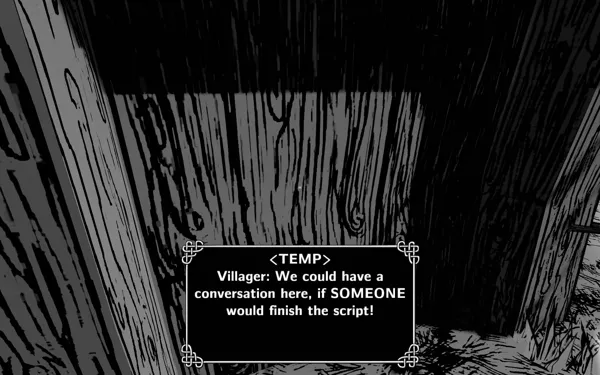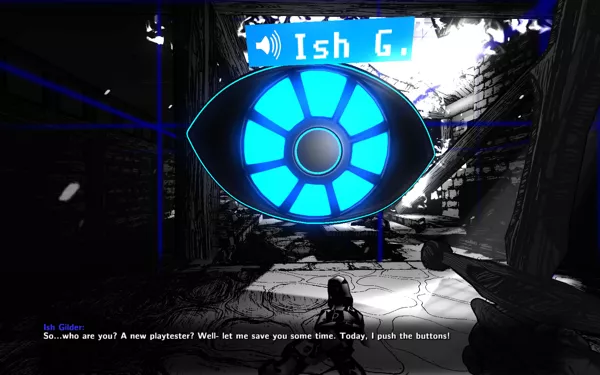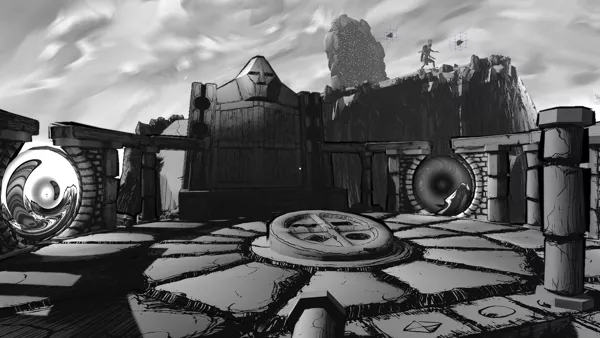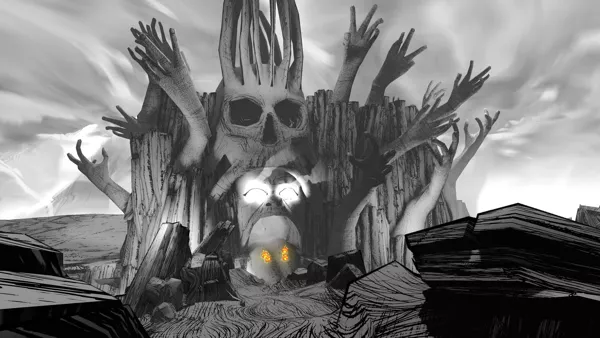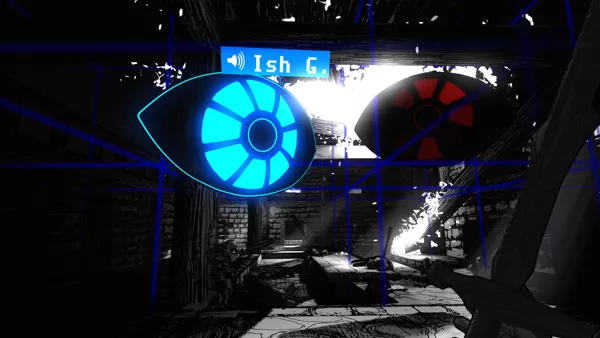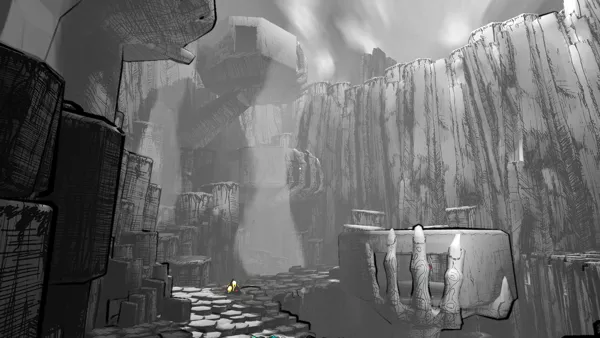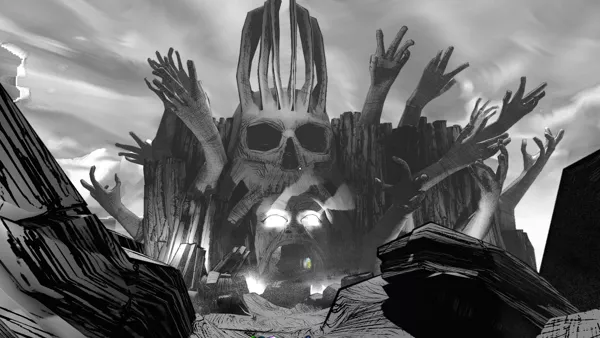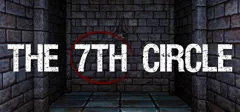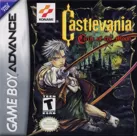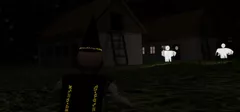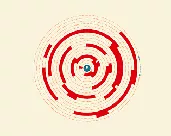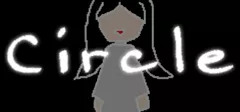The Magic Circle
Description official description
In The Magic Circle the player controls a QA Tester playing the unfinished game also called The Magic Circle. It is a fictitious fantasy game created by Ishmael "Starfather" Gilder of TMC Games, as a crowd-funded title 20 years in the making as a sequel to a wildly successful text adventure. A first layer of the game serves as a commentary on game development. While exploring the game world, in development, from a first-person perspective, the creators can be overheard talking about the game. The designers Ish Gilder, Maze Evelyn and Coda Soliz have god-like powers and constantly argue about where to take the development. Gilder is full of himself and believes everyone should follow his ideas. Maze Evelyn is the star under contract for the game, but looking for a way out. Coda Soliz is a new recruit, heavily involved in fan fiction, devoted to Gilder, but also wildly imaginative in taking the game beyond the initial concept. Many game mechanics and elements are changed at will, and the player often discovers notes left behind by complaining temps, or arguments between the art director and programmers or designers about parts of the game world.
The initial, unfinished version of the fictitious The Magic Circle is over in a few minutes, as almost nothing is done yet. However, an entity called Old Pro appears. It is a character for the first version of the game, which was meant to be a science fiction game aboard a game station. He teaches the player how to break the game and find life (power) in the cracks; the assets, code and elements left behind in the long development process. Through these abilities the real game starts. The goal is to earn power, overcome challenges and earn abilities to become a development god yourself, able to change the game at will, and beating the developers at their own game. That part focuses on exploration of the game world. Through the right mouse button energy can be collected to fill a meter. This energy can then be used to trap elements of the game world, to edit them. This pseudo hacking element allows the player to alter enemies and objects, for instance renaming them, changing their movement and attack patterns, defining enemies and allies and so on. These abilities can also be taken to give them to other creatures or objects. This technique is used to solve puzzles in a game world with a large amount of freedom where multiple solutions can be used to overcome the environment based problems.
The energy can be used to summon allies (often former enemies that have been modified) as a large army. Through properties such as 'float' creatures can fly, assigning them 'fireproof' makes them resistant to fire, and it is even possible to give a floating rock a railgun to attack as there are no fixed solutions or combinations; anything can be mixed. The player is encouraged to experiment with different combinations of the attributes. It is possible to die when attacked by enemies, as the player character itself has no weapons, but there is an unlimited number of lives and all abilities are kept forever. Defeated enemies or allies remain in the game world as ghosts with a blurry outline, and can be brought back to life by filling them with energy and changing their properties. That way nothing in the game world is ever lost and always available for new combinations. Another type of tool allows the character to create waypoints for the army of allies. There is an in-game map and fast travel is available to move between locations quickly.
The game combines many different styles, with pixelated art for the early space station environment, morphing dynamically in the much smoother fantasy world, which is however largely grey as the colouring has not been done yet. The initial goal is to 'ghost' the Sky Bastard high up in the sky to become more powerful than the developers, but after that part there is another large part with very different gameplay, moving away from the game world, but still based on the same mechanics. In that part the player character almost becomes a game developer from inside the game, able to change almost anything, and blurring the line between the game and reality.
The console versions, called Gold Edition, received a major engine upgrade and improvements to lighting and AI.
Groups +
Screenshots
Promos
Credits (Windows version)
56 People (42 developers, 14 thanks) · View all
| Cast |
|
| question | |
| Sound Design |
|
| Music |
|
| Cinematic Illustration | |
| Additional Illustration | |
| Teaser Music | |
| Voice Production by |
|
| Casting and Production | |
| Production Manager | |
| Business Associate | |
| Dialogue Recordist | |
| Production Coordinators | |
| Motion Capture Services by |
|
| Motion Capture Artist | |
| [ full credits ] | |
Reviews
Critics
Average score: 79% (based on 10 ratings)
| Critic [ Expand All ] | Platform | Score |
|---|---|---|
| Escapist, The | Windows | 90% |
| Destructoid | Windows | 85% |
| GameQuarter | PlayStation 4 | 84% |
| MAN!AC / M! Games | PlayStation 4 | 82% |
| Garage Band Gamers | PlayStation 4 | 80% |
| IGN | Windows | 78% |
| PC Gamer | Windows | 78% |
| Video Chums | PlayStation 4 | 75% |
| Game Hoard, The | Windows | 71% |
| Kill Screen | Windows | 70% |
| Rock, Paper, Shotgun | Windows | Unscored |
| Gameplay (Benelux) | Windows | Unscored |
Players
Average score: 4.2 out of 5 (based on 3 ratings with 0 reviews)
Be the first to review this game!
Analytics
Identifiers +
Contribute
Are you familiar with this game? Help document and preserve this entry in video game history! If your contribution is approved, you will earn points and be credited as a contributor.
Contributors to this Entry
Game added by Sciere.
Game added February 20, 2016. Last modified November 1, 2024.


